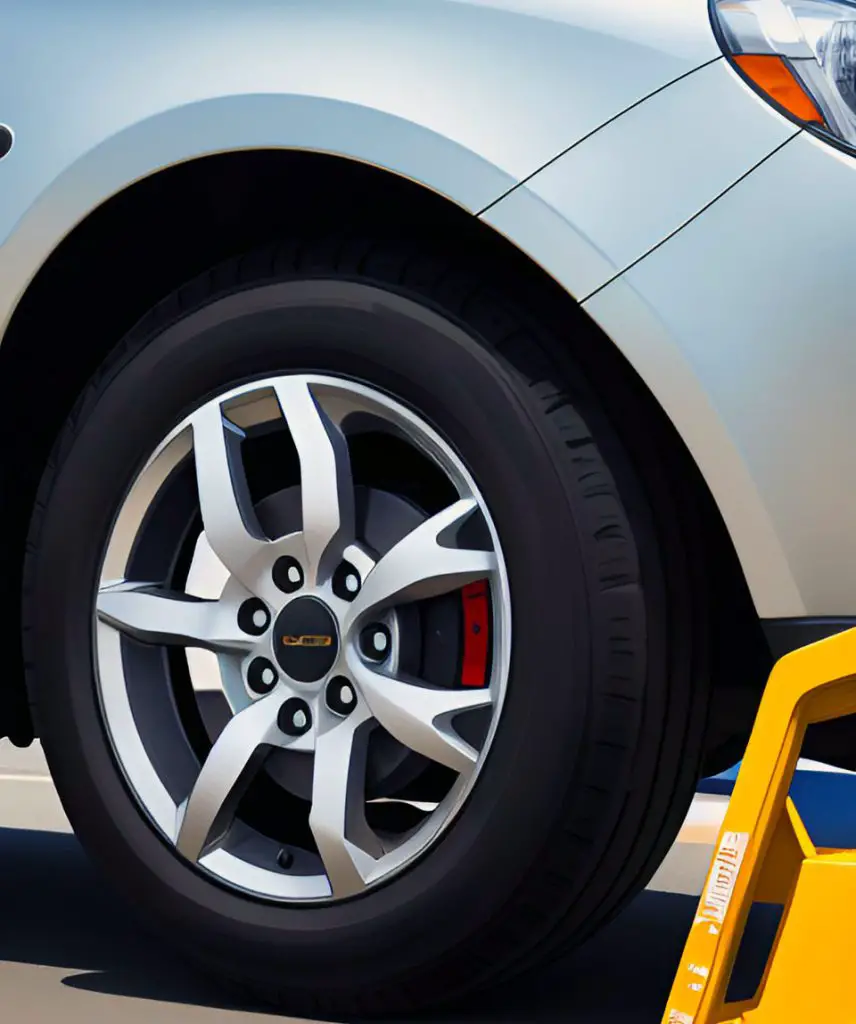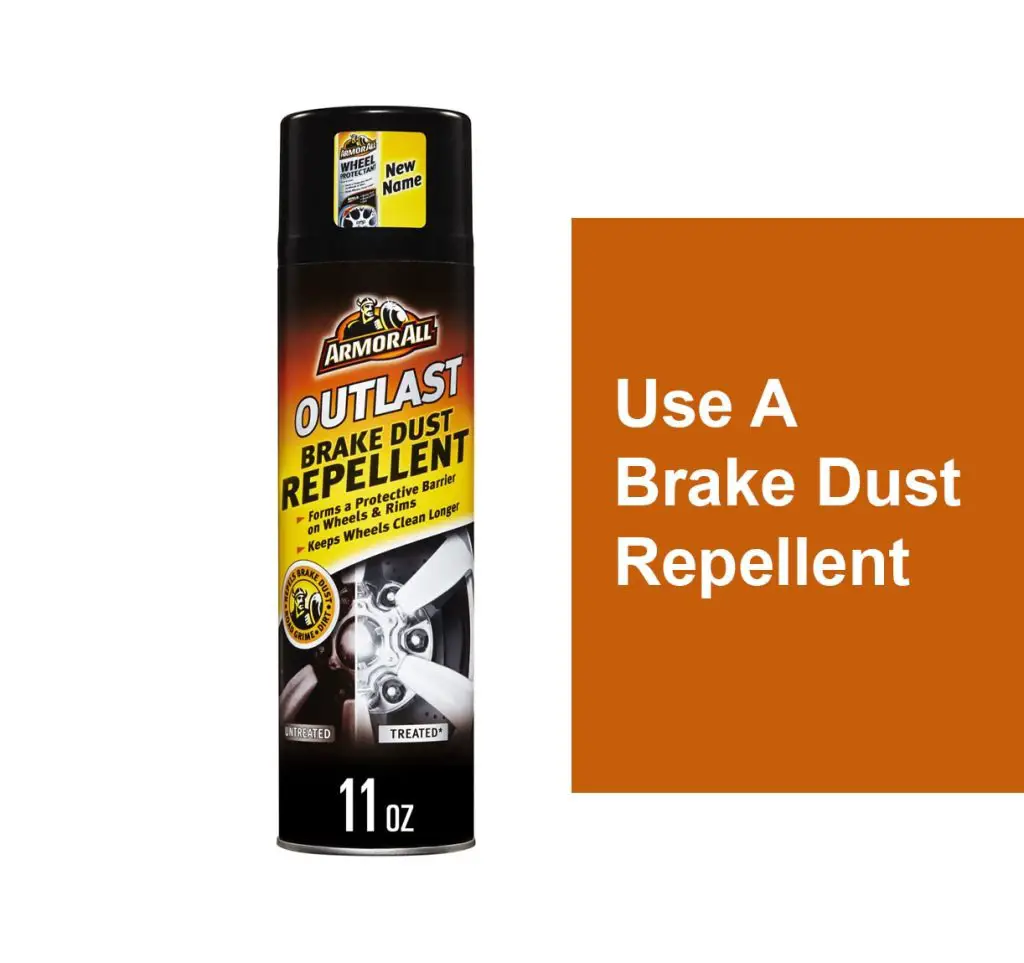How To Prevent Brake Dust In A Car? [ 6 Effective Ways ]
Brake dust is a byproduct of brake pads and discs rubbing when you slow down your vehicle. Its buildup is a normal part of vehicle maintenance and, if left unchecked, can eventually lead to tire staining and possible damage to the wheel’s finish.
Fortunately, there are measures you can take to reduce its accumulation and clean up what has already built up on your wheels.
The first thing any car owner should do regarding brake dust is prevention. Regularly lubricating the brakes, as well as regularly replacing brake pads/drums or rotors, greatly reduces the amount of dust that accumulates on your wheels.
Additionally, some companies have begun producing special brake pads designed specifically to reduce dust build-up. Wheel covers or waxing products — such as wheel-specific sealants — may also protect against the buildup of dirt and grime, which contribute to brake dust formation.
Finally, a regular cleaning with soap and water works great for kick-starting an effective routine to keep your wheels looking their best while minimizing unsightly brake-studded castes piling up on each side of your rims.
Table of Contents
What’s Brake Dust?

Brake dust is an unavoidable side-effect of driving that causes your wheels to accumulate a dark and unsightly residue quickly. It comprises three primary components: iron particles, carbon residue, and friction material from the brake pad.
The color and amount of this dust vary greatly depending on the type of brake pads in use. European cars are known for having dark, quiet brake pads that dress your wheels with a heavy dose of road grime.
On the other hand, other brake pad materials may have more metal content to improve durability over time, resulting in reddish brake dust instead.
It’s important to note that while different braking systems (disc brakes vs. drum brakes) might cause brake dust to build up at different rates, it can never be completely avoided.
Regular cleaning is thus necessary to keep your car looking like new and protect vulnerable surfaces, such as paint coatings or clear coatings, from rusting due to regular exposure to this mixture of particles and residues.
How to Prevent Brake Dust in A Car?
Brake dust is an inevitable consequence of driving, but there are things you can do to help reduce the amount of brake dust that accumulates in your car. The key is to keep your brakes in good working order and follow a regular maintenance routine. Follow the below steps to prevent brake dust in a car:
1. Use A Brake Dust Repellent

Using a brake dust repellent is a great way to help keep your alloy wheels looking their best. With this product, you can spray an aerosol repellent onto your car’s rims, creating an invisible protective barrier that repels brake dust. The protection generally lasts for a few weeks and will help maintain the shine of your wheels.
It is important to note that not all types of alloy wheels are compatible with this type of repellent. Check the compatibility with your specific rims before spraying on any products.
It is also key to always use protective safety measures such as gloves, eyewear, and masks when applying any chemical repellents directly to car parts. By taking these small but important precautions, you can be sure your rims look their best in no time.
2. Clean Regularly
Regularly cleaning your wheels is the best way to prevent brake dust from accumulating on them. Use a wheel-specific cleaner and soft brush or sponge, taking extra care not to scratch the surface. Use a clay bar with lubricant designed for car detailing for stubborn brake dust buildup.
Regularly cleaning your car’s wheels is the best way to prevent brake dust from accumulating on them. Brake dust comprises tiny particles of metal, rubber, and other materials that come off your brakes as you drive.
It can accumulate quickly, making your wheels look dull and dirty. Keeping your wheels clean by washing them regularly with a specialized wheel cleaner is the key to avoiding a buildup. Use a soft brush or sponge and rinse your wheels thoroughly with water after washing. If you notice any stubborn buildup, use a clay bar with lubricant designed for car detailing.
3. Lubricate The Brakes
Regularly lubricating your brakes is an important part of keeping brake dust down. Using the correct type and amount of lubricant prevents brake dust from forming.
Use a high-temperature grease specifically designed for brakes and follow the manufacturer’s instructions regarding how much to apply and when to lubricate.
4. Choose The Right Brake Pads
Different brake pads produce different dust levels, so selecting the right type can help reduce the amount of brake dust accumulating on your car’s wheels. Ceramic brake pads are the least likely to produce dust but may not be suitable for all vehicles. Research the appropriate type of brake pad for your car and ensure that it is compatible with your brakes before installing them.
5. Try Aftermarket Pads
Replacing the brakes on your vehicle can be expensive and difficult, so why not try aftermarket pads? An aftermarket pad is a great way to reduce dust buildup and improve performance. It’s important to research before deciding which option is best for you, as some are better suited for particular brands.
The most popular types of aftermarket pads are ceramic because they contain Kevlar, synthetic fibers, and carbon fibers that all help to reduce friction and, therefore, dust.
Companies such as Brake Warehouse offer low-dusting pads that have been pre-tested in the laboratory, giving owners the confidence that their car is in safe hands. With professional installation provided at many locations, owners will ensure all requirements are met when installing the new pad.
So if you want to upgrade your car’s brakes while also reducing dust buildup, consider investing in an aftermarket pad today.
6. Try Hydrosilex
Hydrosilex is a highly sought-after product designed to help prevent brake dust buildup and protect cars from other contaminants. This silica soap is applied to the exterior of vehicles, forming an invisible barrier that shields against dirt and other hazardous substances that can damage car surfaces.
Applied properly, Hydrosilex creates an expressway for brake dust to slide off surfaces and helps with water spots and staining from automotive fluids.
This product has won accolades from consumers who praise its ability to clean and showcase car surfaces. While Hydrosilex may cost more than similar products on the market, the reviews are generally positive – car enthusiasts are happy with the results they’ve seen repeatedly.
Those interested in using this product should purchase software – such as waxes or polishes – designed specifically for use alongside it to get maximum protection out of their investments.
Frequently Asked Questions [FAQs]
1. Does Wax Prevent Brake Dust?
Waxing your car can help reduce the amount of brake dust that accumulates on the surface of your vehicle. The wax acts as a barrier, protecting the paint from the corrosive effects of brake dust and other contaminants.
When applied correctly, it can also make it easier to remove any dust buildup when you’re cleaning your car. While waxing won’t completely prevent brake dust from accumulating on your car, it can help to reduce the amount.
2. How Often Should I Clean My Brakes?
You should clean your brakes at least once a month or after long drives. This will help keep brake dust and other contaminants from building up on the surface of your wheels and damaging the paint. Be sure to use the right products when cleaning and lubricating your brakes – harsh chemicals or abrasive cleaners can cause more harm than good.
3. What Is The Best Way To Remove Brake Dust From My Car?
The best way to remove brake dust from a car is to use a high-quality cleaner designed specifically for this purpose. When using a cleaner, following the directions carefully and using the appropriate ratios of product to water is important.
It’s also important to use a soft cloth or sponge to apply the cleaner so you don’t damage the paint on your car. After applying the cleaner, rinse it off with water and dry the surface with a soft towel.
4. Is Brake Dust Bad For Wheels?
Yes, brake dust can be bad for wheels. Brake dust is a combination of particles created by the friction of your brake pads and rotors as you apply pressure to stop your car.
The dust that is created can contain heavy metals like lead, copper, and zinc, which can be damaging to wheel finishes if left unchecked over time. This is because these particles can become embedded in the wheel finish and corrode the material of your wheels.
5. Is Brake Dust Normal?
Brake dust is a normal by-product of the braking process, so it is impossible to eliminate it. Brake dust is created when the brake pads rub against the rotors, creating friction and heat, which causes tiny metal particles from the brake pads to break off and become airborne. This material eventually settles onto nearby surfaces like wheels and other automotive exterior components.
Conclusion
Brake dust is a normal by-product of the braking process and cannot be eliminated. However, several ways exist to help reduce the amount of brake dust accumulating on your car. Hydrosilex is one such product that acts as a barrier against dirt and other contaminants, making it easier to clean off when necessary. Waxing your car can also help reduce brake dust accumulating on the surface and regular brake maintenance and cleaning.
